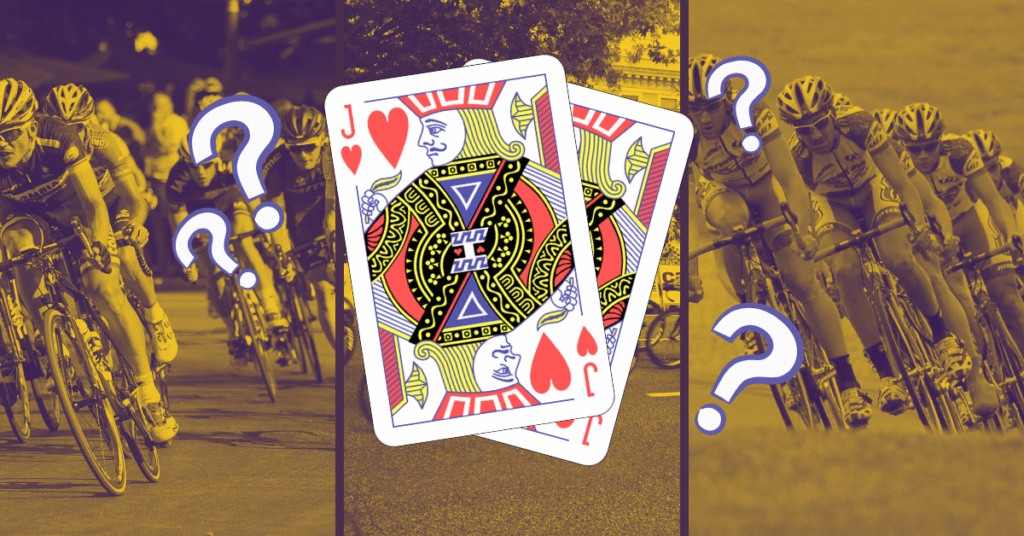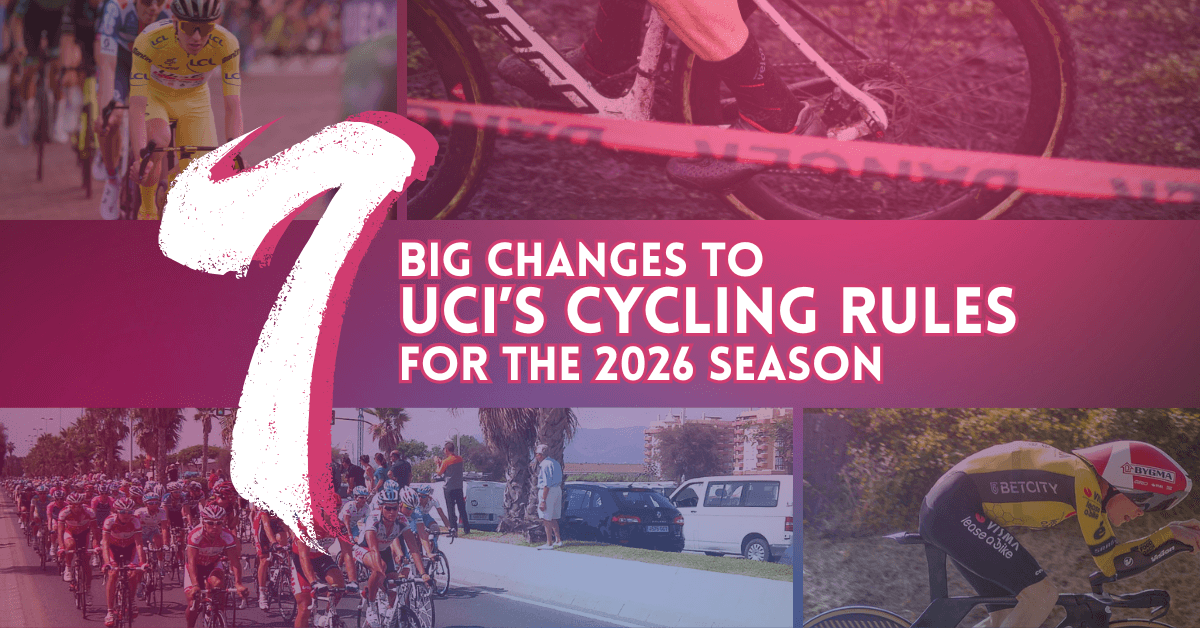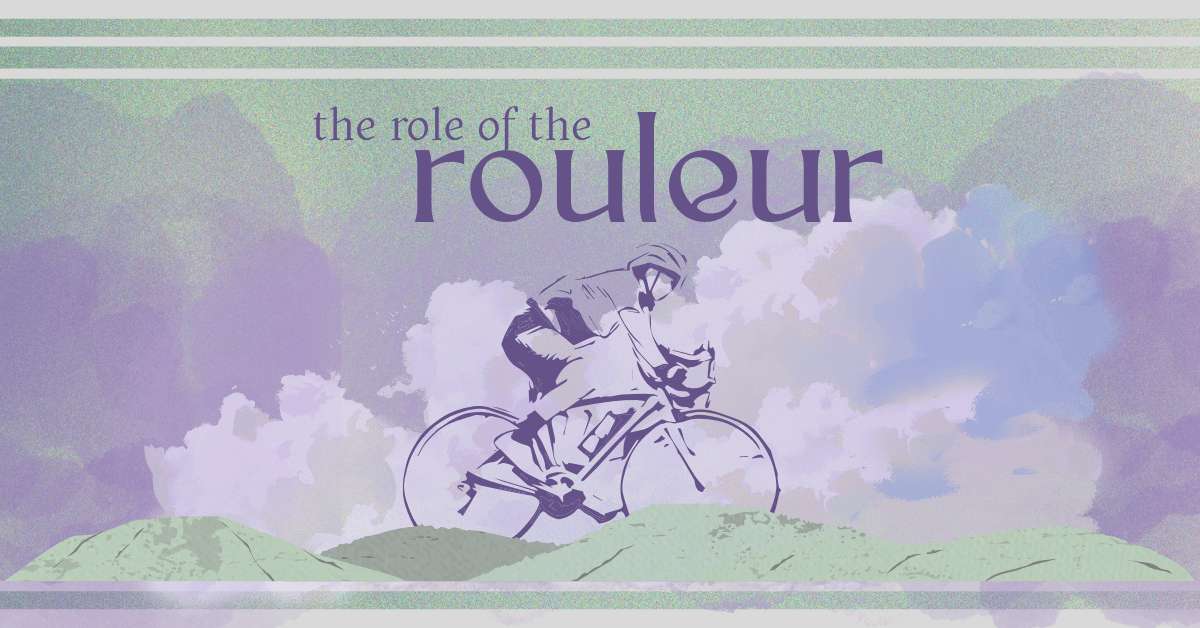In part 1 of this series, Explaining Cycling’s Sorting Hat, we dug into the different types of riders in the modern peloton. Now, let’s take a look at some of the riders who fit into each category… and some who may fit into no category at all!

Within road cycling, there have always been different ‘rider types’, with most riders falling under one of the following categories: sprinter, ‘pure’ climber, General Classification (also known as GC) rider, puncheur, time trial specialist, or rouleur.
Some top riders are increasingly making the conscious decision to lean into their specialism, and becoming more selective with the races they ride – with the most prominent examples being Jonas Vingegaard and Mathieu van der Poel, and to a lesser extent, Demi Vollering. However, some riders – such as Tadej Pogačar, Remco Evenepoel, Wout van Aert and Lotte Kopecky – fall on the opposite end of the scale, being able to climb, time trial and perform well in one-day races, and actively choose to make the most of their versatility by riding a wide range of races and, in the case of the latter two, playing multiple roles within their teams.
In this article, we’ll take a deep-dive into each of these two groups and seven of the riders within them, and ultimately address whether the popular saying “a jack of all trades is a master of none, but often times better than a master of one” really does ring true.
Embed from Getty ImagesThe ‘Masters of One’
1. Jonas Vingegaard
One of the most prominent specialists in today’s era, is Vingegaard. He’s been hailed by many as the best male GC rider in the world, having won the Tour de France twice in a row, as well as Tirreno-Adriatico, Itzulia Basque Country and the Critérium du Dauphiné, amongst others, and placing second ahead of his teammate at the Vuelta a España. To achieve this, however, his training is exclusively tailored towards GC success, and he’s incredibly selective with the races that he rides. When compared to Pogačar, who’s also a top-class GC rider, Vingegaard races considerably fewer races, and almost exclusively rides stage races. He has tried his hand at a few one-day races in the past, such as some of the Ardennes classics, Il Lombardia, the Giro dell’Emilia and the Clasica San Sebastián, however his participation in these races is few and far between, and he’s yet to gain notable results.
Knowing that his strength lies in being an exceptional GC rider, Vingegaard prefers to focus on that, rather than straying outside of his comfort zone to diversify his palmarès.
Embed from Getty Images2. Mathieu van der Poel
Van der Poel is another hyperspecialist, who mainly succeeds in the spring classics and any other one-day races that involve rolling terrain with technical sectors, having won both Paris-Roubaix and the Ronde van Vlaanderen three times, and Milano-Sanremo, E3 Saxo Classic and Dwars door Vlaanderen twice, as well as the Amstel Gold Race, Strade Bianche and the 2023 World Championships Road Race, amongst others. He’s only become more dominant in recent years, and this has seemingly coincided with reduced participation across the season.
Nowadays, he races very little – even as World Champion, he only completed just over 40 race days, which is noticeably fewer than most before him – and he only targets the races that suit him, with the one exception being the Tour de France. Even then, his participation in the Tour – where, aside from winning one stage in 2021, he has historically achieved minimal success – is only due to strong encouragement from his team, who need him as a leadout for Jasper Philipsen, and his sponsors, who want to show off their best and highest-paid rider in the biggest race of the year. In an interview with Sporza, he plainly stated that he doesn’t like the Tour, and would rather “ride five races in which [he’s] competing to win than 20 stages in which [he’s] not competing for the win”, which exemplifies the attitude of the majority of these specialists: they’d rather identify the area that they’re best at, and focus on that and nothing else.
3. Demi Vollering
In the women’s peloton, Vollering is one of the most well-known examples of a specialist rider. As the best female GC rider in the world currently, she’s usually the clear favourite in any stage race she enters, and has won the Tour de France Femmes, the Vuelta España Femenina and the Tour de Romandie, amongst others, as well as Itzulia Women and the Vuelta a Burgos Feminas twice each. Notably, however, the GC riders on the women’s side don’t tend to solely focus on stage racing to the same extent as some of the men. So Vollering often races, and has had some success in, one-day races – having won Liège-Bastogne-Liège Femmes and Strade Bianche Donne twice each, as well as the Amstel Gold Race and la Flèche Wallonne Féminine, amongst others. But it’s clear that in comparison to some of the more versatile GC riders in the women’s peloton, like Elisa Longo Borghini, Vollering’s success in one-day races is limited to those with longer, harder climbs – and even then, due to her weaker sprint, she often struggles to win if she’s unable to separate herself from the peloton on the climbs and make it to the finish line alone.
Read more: Why We Love the Tour de France Femmes
Embed from Getty ImagesThe ‘Jacks of All Trades’
4. Tadej Pogačar
The most prominent current example of a rider that manages to excel across a number of categories, is Pogačar. The World Champion is a top-class GC rider, having won the Tour de France three times, as well as the Giro d’Italia, and a number of other prestigious stage races. He is also an impressive time triallist, having won multiple Grand Tour individual time trial stages, and has shown himself to be a prolific one-day racer, having lifted a monument trophy nine times, and won a number of other prestigious one-day races, such as Strade Bianche (three times) and the Amstel Gold Race.
Embed from Getty Images5. Remco Evenepoel
Evenepoel is another rider who has proven to be extremely versatile. He’s shown promise as a GC rider – having won La Vuelta a España, and come third in his debut Tour de France behind Pogačar and Vingegaard – but has also won many one-day races, and has become World Champion in both the Road Race and the Individual Time Trial, and a double Olympic gold medallist in both of those disciplines too. He regularly rides a range of races – from the mountainous Clásica san Sebastián to the pancake-flat Chrono des Nations – with very different goals in mind.
6. Lotte Kopecky
Kopecky, the two-time World Champion, shares similar traits with Evenepoel. Whilst typically viewed as a puncheur that excels in the spring Classics, she’s also shown that she can climb incredibly well – winning the 2024 World Championships Road Race on a course expected to only suit the climbers – and perform well in the GC, having won the Tour de Romandie ahead of Vollering last year. On top of this, she can time trial with the best, and is the current European Champion in the discipline. Even within her team, SDWorx-Protime, she plays a number of roles: leader in the classics, stage hunter and/or GC leader in stage races (depending on the race profile), and leadout rider for the team’s sprinter, Lorena Wiebes.
Embed from Getty Images7. Wout van Aert
Finally, one of the most truly versatile riders in the current professional peloton, is Van Aert. As a real team player alongside being a lead member of team Visma Lease-a-Bike, Van Aert has played almost every role: sprinter, lead-out, classics leader, mountain domestique and time trial specialist. He has shown his versatility time and time again, and especially so in the 2022 Tour de France, where he won three incredibly different stages and the overall points classification, as well as in the 2024 Vuelta a España, where again he won multiple stages, but also led both the points classification and the King of the Mountains classification at the same time. Additionally, he too is a strong time triallist, having been the Belgian individual time trial National Champion, and having won numerous time trial stages in stage races, and a bronze medal at the 2024 Olympic Games.
Read more: Learn about the role of “superdomestiques” in Ode To the Domestique
Embed from Getty ImagesThe pros and cons to mastering more than one discipline.
Following the above, you might question how it could ever be a disadvantage to be good at a range of things, rather than just one – versatile riders naturally have a greater number of races within which they can excel, and therefore a greater chance at achieving a diverse palmarès and breaking records.
However, there are downsides that come with versatility, which help to explain why some riders prefer to lean into their specialism instead.
Versatility can lessen a rider’s chances of being dominant in one area.
As the saying goes, often a ‘Jack of All Trades’ ends up being a ‘Master of None’. In recent years we’ve begun to see this with Van Aert, who, despite being incredibly strong in a number of disciplines, is clearly no longer the undisputed best in any. Van der Poel – who’s largely perceived as his closest rival – targets his training to ensure that he’s the best in the spring classics, and comparatively races far less than Van Aert, spending large chunks of his year resting, and rarely playing a domestique role outside of acting as a leadout for Jasper Philipsen. He now has a string of Monuments and other impressive victories to show for it, and in recent years, has been consistently beating Van Aert in races where Van Aert would’ve had an equal, if not better, chance to win in the past. Additionally, whilst Van Aert can sprint well, in bunch sprints he often finds himself beaten by the pure sprinters, and whilst he can ride a good time trial, he often finds himself beaten by the time trial specialists. Unfortunately, in most cases, specializing does give a rider a much greater chance of being able to dominate their category, and being good at everything doesn’t necessarily translate to being the best at anything.
Read more: Learn about rouleurs, some of the most versatile riders in the modern pro peloton.
Embed from Getty ImagesVersatile riders may have to sacrifice performance in some areas to succeed in others.
If versatile riders do want to become the best in a certain discipline, they often have to make a concerted effort to alter their training and nutrition plans, which can then affect their overall versatility, and performance in other areas. For example, training for a Grand Tour usually requires a lot of focus on building endurance, and a rider may have to lose weight to increase their efficiency when climbing. In contrast, training for a cobbled classic usually focuses on intensity and explosivity, and carrying more weight is usually helpful to give the rider the ability to generate more power. If these two events are too close too together in the calendar, it can be difficult to strike the right balance in training and nutrition plans to ensure that a rider can be in peak shape for each.
Using Evenepoel as an example, he has long expressed a desire to be amongst the best GC riders in the current pro-peloton, and despite having achieved some impressive GC results, compared to Pogačar and Vingegaard, he still has a long way to go. His ability to maintain top performance across the course of a stage race seems to be the main thing holding him back – he has ‘cracked’ and lost significant time in a number of stage races where he was aiming for the GC, most notably in the 2023 edition of the Vuelta a España, where he lost almost 30 minutes in one stage. It appears as though the only way he could win the Tour de France against the ‘Big Two’ is if he dedicated absolutely everything to this one goal, and improved his climbing endurance and consistency, but this would naturally come at a cost to his explosiveness and one-day performance, and thereby lessen his versatility.
Read more: Evenepoel versus Pogačar: A Rivalry in the Ardennes
Embed from Getty ImagesThe ‘Pogačar’ exception.
The only rider that manages to avoid both of these pitfalls, is Pogačar, who has become the best rider in almost every type of race he enters, and seemingly doesn’t have to make any performance sacrifices in order to win different races. Whilst there are still two big races in which a win is seemingly slightly too far out of reach for his physical capabilities at the minute (Milano-Sanremo and Paris-Roubaix) these are amazingly the only nuts he has left to crack – and even then, he’s put in convincing podium performances at both, indicating that in the right conditions, he could eventually take the top spot in the future.
Read more: The Big 100: These Pros Might Reach A Hundred Wins in 2025
It’s unclear how he does it, but he’s seemingly able to race at his peak all year round, reaping all the benefits of being incredibly versatile, whilst still dominating in almost all areas. Most riders however, being mortals, can’t operate like this, and so have to choose.
This then leads us to the all-important question: is it really better to be a ‘Jack of All Trades’ or a ‘Master of One’?
So… which is better?
As discussed, there are pros and cons of both, and it’s difficult to settle on a definitive answer. If you were to ask the public, you’d receive a whole host of conflicting answers. Some riders, like Van der Poel, are hailed for their success in a particular category, yet others, like Vingegaard, are called ‘boring’ and looked down upon for not racing in a wide range of races. Similarly, some riders, like Kopecky and Pogačar, are praised for their versatility, whereas others, like Van Aert and Evenepoel, are sometimes underrated because they don’t dominate in a particular category. Somehow, the Tour de France is the most importance race, and until Evenepoel wins it, he’s ‘not a serious rider’, but at the same time, Vingegaard can’t be the ‘Greatest of All Time’ (despite having won the Tour twice) because he doesn’t race much else – but also Van der Poel is the ‘Greatest of All Time’ (despite usually being a complete non-entity at the Tour) because he’s so dominant in…the spring classics? It’s all incredibly circular, and evidently based more on personal bias than on objective criteria, leading us no further towards an authoritative answer.
It’s also worth noting that the answer might be different for a domestique than a lead rider. Versatility is incredibly valuable in a domestique, as it allows a team to ‘get their money’s worth’ by using the same rider in a wider range of races, and is particularly valuable in a Grand Tour, where a team can only take eight riders for the entire three weeks, and can’t make any substitutions for different stages. For a lead rider, however, versatility is often less important, especially where the rider is dominant in their specialism. Riders like Vingegaard and Van der Poel will always be valuable so long as they maintain their top level, and so arguably a rider in their position would be better advised to focus on remaining dominant than on building versatility in other areas.
Embed from Getty ImagesIt’s therefore hard to say which is better, and the answer will differ from rider to rider. Unless their name is Pogačar, there will likely have to be some sort of trade-off between the two. Whether it’s better to be a ‘Jack of All Trades’ or a ‘Master of One’ is ultimately a question only the riders themselves can tussle with, taking into account their own goals, physical capabilities and personal preferences.
What do you think? Let us know in the comments or on social media! ★










Leave a Reply